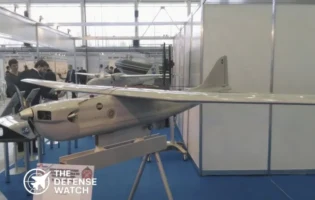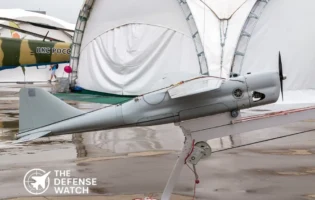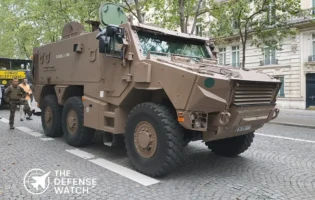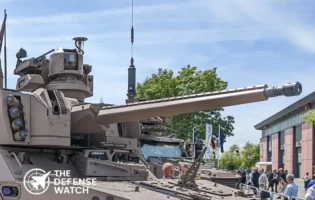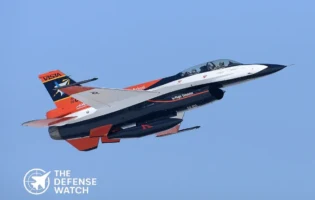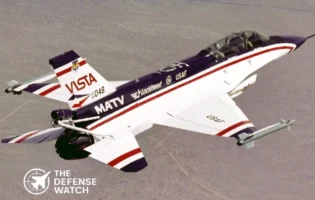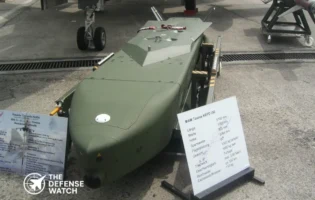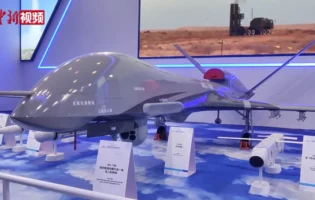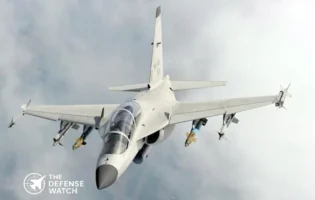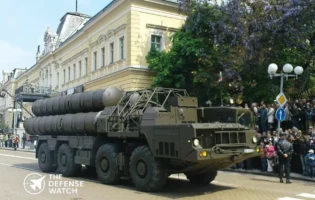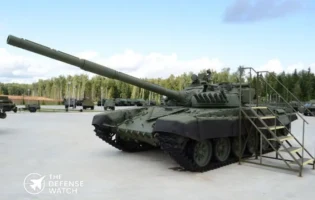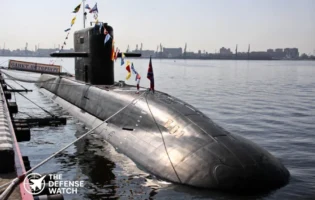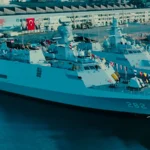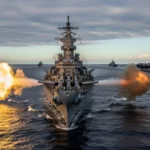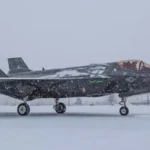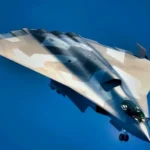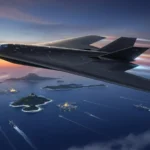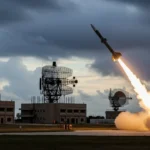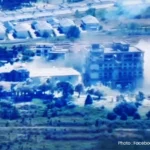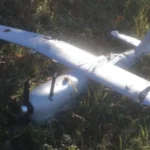M1A2 Abrams SEPv3 vs Leopard 2A7+: Head-to-Head in Modern Armour Warfare
When two of the world’s leading main battle tanks go head-to-head — the U.S.-designed M1A2 Abrams SEPv3 and the German-designed Leopard 2A7+ — the result matters far beyond steel and engines. For U.S. readers, this comparison is significant because the Abrams remains central to U.S. Army doctrine and potential peer-or-near-peer scenarios, while the Leopard 2A7+ is Europe’s leading MBT and features in NATO contingencies, export markets and allied interoperability. In an era when armoured warfare is once again drawing scrutiny — amid tensions with Russia, China, and in the Middle East — understanding how these systems stack up is key. This article presents a detailed “M1A2 Abrams SEPv3 vs Leopard 2A7+” comparison, examining design, firepower, mobility, combat effectiveness and cost/export value.
Specifications Table
Here is a side-by-side view of core specifications for both systems:
| Specification | M1A2 Abrams SEPv3 | Leopard 2A7+ |
|---|---|---|
| Crew | 4 (Commander, Gunner, Loader, Driver) | 4 (Commander, Gunner, Loader, Driver) |
| Entry into service / upgrade timing | Fielding began circa 2020 – for SEPv3 upgrade. | Introduced mid-2010s (A7+ variant) |
| Weight | ~73,600 kg (per one source) | ~67,500 kg |
| Engine / Power | Honeywell AGT1500 gas turbine, ~1,500 hp | MTU diesel engine, ~1,500 hp |
| Max road speed | ~68 km/h | ~72 km/h |
| Operational range | ~425 km (various sources) | ~450 km |
| Main armament | 120 mm M256 smoothbore gun | 120 mm L/55 smoothbore gun |
| Armour/Protection Highlights | Next Generation Armor Package (NGAP), APU, data-link ammo, improved IED/APS protection | Modular armour, mine/IED protection kits, urban operations kit |
| Approximate Unit Cost | Not publicly exact for SEPv3 (upgrade cost) | ~$25-30 million (as referenced for some units) |
Design & Technology (M1A2 Abrams SEPv3 vs Leopard 2A7+)
M1A2 Abrams SEPv3
The SEPv3 variant of the Abrams emphasises modernisation in power generation, networking, survivability and lethality. Key design features include an auxiliary power unit (APU) under armour allowing “silent watch” operations while the main engine is off — thereby reducing thermal/acoustic signature. Moreover, the SEPv3 incorporates the Next Generation Armor Package (NGAP or NEA) and improved under-body IED/mine protection. Networking upgrades allow ammunition data-link (ADL) capability, enabling programmable 120 mm rounds and integration with digital battle networks. From a U.S. defence systems perspective, this upgrade aligns the platform with future threats such as reactive and active protection systems, unmanned sensors and electronic warfare.
Leopard 2A7+
The Leopard 2A7+ builds on the venerable Leopard 2 series with a modular protection concept, additional mine/IED protection, and an urban operations kit. According to its description, the A7+ variant allows integration of add-on armour modules, slat armour for RPG threats, and improved mobility components (final drive, track, brake systems) for better performance. The fire-control and sensor suite are state-of-the-art: for example the baseline Leopard 2 series has dual magnified stabilised thermal sights, independent commander panoramic sights and a combat management system. In NATO/European export contexts, the modularity and adaptability of Leopard 2A7+ gives it design flexibility for multiple mission sets (high-intensity, peace-support, urban).
Design & Technology Summary:
- Abrams benefits from U.S. investment in networked warfare, silent-watch, advanced ammo linkage, and active protection system integration.
- Leopard 2A7+ emphasises modularity, protection against mines/RPGs, proven design lineage across NATO, and adaptability for urban and allied use.
- For U.S. defence systems planning, Abrams may offer more “digital backbone” integration; Leopard offers strong base protection and allied-shared logistics advantages.
Firepower & Performance
M1A2 Abrams SEPv3
The Abrams SEPv3 retains the 120 mm M256 smoothbore gun — the same calibre widely used among NATO MBTs — but adds ammunition data-link capability enabling advanced rounds such as the M829A4 kinetic energy penetrator and XM1147 AMP multirole round. The loader and gunner benefit from upgraded sights (Improved FLIR — forward-looking infrared) giving improved target acquisition in conditions such as smoke, obscurants or low visibility. Machine-gun armament includes a coaxial 7.62 mm M240, roof-mounted .50 cal (12.7 mm) via a remote weapon station, and a second 7.62 mm secondary.
In practical terms, the Abrams brings high fire control precision, digital ammunition programming flexibility, and lethality against modern targets such as advanced armour, bunkers, anti-tank teams, and urban threats.
Leopard 2A7+
The Leopard 2A7+ also mounts a 120 mm L/55 smoothbore gun (Rheinmetall) compatible with a wide range of NATO rounds (APFSDS, DM53/DM63 etc.). While official detailed modern ammunition for the 2A7+ is less publicly detailed than the U.S. variants, its design is oriented to deliver high kinetic energy performance and modular ammunition flexibility. One source mentions 120 mm gun with an ammo pool of 35 rounds. Secondary armament includes coaxial 7.62 mm and optional remote weapon stations for urban applications.
From a performance angle, the Leopard 2A7+ offers a balance of proven firepower, excellent fire-control systems, and adaptability via modular upgrades — especially in allied contexts where supply logistics and trained crews already exist.
Firepower & Performance Summary:
- Abrams SEPv3 has an edge in modern ammunition capability (data-link rounds, air-burst/programmable) and advanced fire-control integration via U.S. network infrastructure.
- Leopard 2A7+ holds strong performance in kinetic firepower, proven 120 mm gun, strong fire-control suite, and modular compatibility.
- In a contest of “who wins” in firepower, it depends on logistics and ammo supply — the Abrams may have a slight technical edge in next-gen ammo, but the 2A7+ remains a formidable challenger.
Operational Range & Mobility
M1A2 Abrams SEPv3
Powered by a 1,500 hp Honeywell AGT1500 gas turbine engine, the Abrams maintains high mobility across terrain types. The gas turbine enables excellent high-speed movement, though historically carries a higher fuel consumption burden compared to diesel. Maximum road speed is ~68 km/h. Operational range is around ~425 km under favorable conditions. The added weight of upgrades (NGAP armour, APS, electronics) increases logistical burden — recovery, transport and fuel consumption are higher.
From a U.S. defence perspective, this means while the Abrams is highly mobile and capable, sustainment and logistics must be planned carefully in expeditionary or austere environments.
Leopard 2A7+
The Leopard 2A7+ uses a ~1,500 hp MTU diesel engine (MTU MB 873 Ka-501) and automatic transmission. Maximum road speed is ~72 km/h and an operational range about ~450 km. The heavier weight and modular armour packages can impact mobility somewhat, but the design enhancements (final drive, tracks, suspension) in the A7+ address much of that.
For allied logistics and operations, the diesel engine simplifies fuel logistics compared to turbine systems, which is a plus in extended operations or coalition scenarios.
Operational Range & Mobility Summary:
- Abrams SEPv3 offers excellent mobility and power but comes with higher fuel/logistics demand due to turbine engine and additional weight.
- Leopard 2A7+ offers slightly better range and arguably simpler sustainment (diesel), strong speed performance and improved chassis upgrades for mobility under heavy armour.
- In U.S. defence contexts where fuel supply is strong (e.g., U.S. theatre or major bases), Abrams gains; in coalition operations or fuel-scarce theatre, the Leopard may have a logistical edge.
Combat Effectiveness
M1A2 Abrams SEPv3
The Abrams series has decades of operational experience, including in Gulf conflicts, Iraq, and more. The SEPv3 upgrades focus on enhancing survivability (improved armour, APS integration), digital network/command-&-control integration and lethality. The U.S. Army’s testing (e.g., FY20 DOT&E report) indicated the SEPv3 demonstrated mean miles between combat mission failures exceeding requirement. The Abrams’ doctrine emphasises “shoot-and-move”, combined arms integration (with infantry, aviation, UAVs), and interoperability within U.S. defence systems.
From a U.S. perspective, the Abrams remains the backbone of armoured warfare — highly effective in open and semi-urban terrain, and designed to face peer/near-peer adversaries such as Russian or Chinese armoured forces.
Leopard 2A7+
The Leopard 2 family has a long service life in NATO and export markets. The A7+ variant emphasises operations in high-intensity and urban corridors, with modular protection against mines, IEDs, and reactive threats. While perhaps less battle-tested in recent large scale peer confrontation compared to Abrams in U.S. service, the Leopard 2A7+ draws on decades of upgrade experience, common logistics across NATO partners, and strong export/adoption. The modularity means it can be tailored for peace-support, urban operations, or high-intensity warfighting.
Combat Effectiveness Summary:
- Abrams SEPv3: top-tier U.S. MBT with best integration into U.S. defence systems, high survivability, proven logistics but heavy demand.
- Leopard 2A7+: highly capable, modular platform, strong allied logistics chain, easier fuel logistics, excellent protection tailored to current threats.
- Which is more “combat effective”? In a pure U.S.‐force scenario, Abrams may have the edge; in joint/allied operations or prolonged logistic-stressed scenarios, the Leopard works very well.
Cost & Export Value
M1A2 Abrams SEPv3
As a U.S. defence system, the Abrams is primarily procured by the U.S. Army, and export customers are limited (due to U.S. export policy and technology controls). The cost of the SEPv3 upgrade includes advanced electronics, networking, armour, and integration with active protection systems. While exact unit cost is not always publicly released, the high sophistication means a substantial per-unit investment. The limited export footprint means its impact on allied defence budgets is lower, but for the U.S., the Abrams remains a strategic export/high end capability.
From a geopolitical standpoint, export of Abrams tanks (previously to countries like Australia or Egypt) signals strong U.S. defence ties; the SEPv3 variant underlines U.S. commitment to ensuring its tanks remain ahead of potential adversaries.
Leopard 2A7+
The Leopard 2A7+ has a strong export and allied footprint. Germany and the manufacturer (Krauss‑Maffei Wegmann / Rheinmetall) have sold many Leopard 2 derivatives across Europe and beyond. One source cites an average unit cost of ~$25.9 million for some units. The modular architecture and compatibility across NATO systems make it an attractive export for countries wanting high capability but with allied logistics.
Geopolitically, the Leopard 2A7+ helps Germany/Europe project defence industrial capability, strengthens NATO burdensharing, and provides allies with top-tier tanks without reliance exclusively on U.S. systems.
Cost & Export Value Summary:
- Cost: Abrams likely higher per unit (due to advanced electronics, networking, APS integration), though full figures are not always transparent.
- Export: Leopard 2A7+ holds stronger export value and allied uptake.
- U.S. defence systems interest: For countries aligned with the U.S., Abrams offers prestige and interoperability with U.S. logistics; for broader allied networks, Leopard offers a cost-effective high-capability option.
Analysis: Strengths & Weaknesses
Strengths of M1A2 Abrams SEPv3:
- Superior integration into U.S. digital and networked warfare systems.
- Advanced ammunition capability via ammo data-link and programmable rounds.
- Excellent survivability upgrades (NGAP armour, APU, APS integration).
- Proven U.S. logistics, doctrine, combined arms integration.
Weaknesses of Abrams SEPv3:
- Heavy weight and high fuel/logistics burden (turbine engine, upgraded systems).
- Limited export footprint and reliance on U.S. supply chain for upgrades/spares.
- In rugged terrain or austere logistic chains, sustainment may be more challenging.
Strengths of Leopard 2A7+:
- Excellent modular protection (mine/IED, urban kits, RPG/slat armour) in a modern design.
- Strong mobility with diesel engine, solid operational range, and allied logistics support.
- Proven across many nations; export friendly; adaptable to various mission sets.
- Cost-effective relative to top U.S. platforms, broad allied interoperability.
Weaknesses of Leopard 2A7+:
- While highly capable, some of the latest U.S. ammunition technologies (e.g., data-link programmable rounds) may still favour the Abrams in edge cases.
- Logistics across non-NATO users may vary; while modular, the upgrade path depends on export contracts and budget.
- In a high-intensity peer adversary scenario facing the very top tier advanced threat, the very newest U.S. variants might hold a slight technical edge.
How the U.S. military views each system:
For the U.S. Army and U.S. defence planners, the Abrams SEPv3 remains the gold standard for U.S. armoured warfare in peer conflict scenarios. It aligns with U.S. doctrine emphasising networked, combined arms, rapid manoeuvre and digital battlefield dominance.
In contrast, the Leopard 2A7+ offers a strong allied partner tank that complements U.S. force posture in Europe and globally. U.S. planners view it as highly interoperable with NATO forces, reducing the burden on U.S. logistics, and serving as a credible deterrent in Europe.
Thus, the U.S. military likely views Abrams as the primary U.S. asset for major theatres, with Leopard 2A7+ as a key allied asset in coalition/partner roles.
Conclusion
In the “M1A2 Abrams SEPv3 vs Leopard 2A7+” comparison, neither system is a clear “winner” in all circumstances — each has its domain of superiority depending on conditions.
- If the scenario is a high-intensity peer conflict where networked warfare, programmable ammunition, and U.S. logistics dominate (e.g., U.S. forces facing near-peer in Europe or Asia), the Abrams SEPv3 has the edge.
- If the scenario is allied coalition operations, sustained logistics in fuel-constrained theatre, urban peace-support missions or export partner roles, the Leopard 2A7+ offers a compelling balance of performance, logistics and cost.
From a U.S. defence systems viewpoint, the Abrams remains the cutting edge for U.S. forces, whereas the Leopard 2A7+ enhances allied capabilities and burden-sharing. Ultimately, the best choice depends on the mission, terrain, logistics and allied framework — rather than a simple “who wins” line.
FAQs
It depends on factors beyond specs — ammo loadout, crew training, terrain, logistics and support. The Abrams may hold a slight technical edge in ammunition and networked systems, but the Leopard 2A7+ remains fully competitive and could win under favourable conditions.
Key upgrades include the auxiliary power unit (APU) under armour, ammunition data-link capability enabling advanced programmable rounds, Next Generation Armor Package (NGAP), improved sensors (IFLIR), and enhanced networking and power-distribution for future systems.
The Leopard 2A7+ uses the modern 120 mm L/55 gun compatible with advanced munitions, and includes modular armour and protection kits. While public information on its data-link rounds is less extensive than for Abrams, its design is clearly aimed at the latest threats (mine/IED, urban warfare) and it supports modular upgrades.
Many factors go into that decision: interoperability with U.S., logistics supply chain, cost, local industry participation, fuel type, mission profile. Allies wanting full U.S. interoperability may favour Abrams, but many choose Leopard 2A7+ for excellent performance, allied logistics tie-in and cost-effectiveness.
Very important. The Abrams’ turbine engine gives high performance but higher fuel/logistics burden. The Leopard’s diesel engine simplifies fuel supply in many theatres. Maintenance, spare parts, upgrade paths and alliance support all factor into long-term effectiveness.


|
|
| Price | |
| Our Rating | |
| Manufacturer | General Dynamics Land Systems Krauss-Maffei Wegmann (KMW) |
| Category | Tanks & Armored Vehicles Tanks & Armored Vehicles |
1. General Information
| Vehicle Name | M1A2 Abrams SEPv3 Leopard 2A7+ |
| Type / Role | Main Battle Tank (MBT) Main Battle Tank (MBT) |
| Manufacturer | General Dynamics Land Systems Krauss-Maffei Wegmann (KMW) |
| Country of Origin | United States Germany |
| In Service | Yes Yes |
| Year Introduced | 2017 (upgrade) 2014 |
| Unit Cost | USD 9.0 million USD 10.5 million (approx.) |
| Crew | 4 (Commander, Gunner, Loader, Driver) 4 (Commander, Gunner, Loader, Driver) |
2. Dimensions & Weight
| Length (Gun Forward) | 9.77 m 10.97 m |
| Width | 3.66 m 3.75 m |
| Height | 2.44 m 3.03 m |
| Weight | 66.8 tons 67.5 tons |
| Ground Clearance | 0.48 m 0.45 m |
| Chassis Material | Composite Armor / Steel Base Modular Composite / Steel Base |
3. Performance
| Engine Type | Gas Turbine / Diesel Engine MTU MB 873 Ka-501 Diesel Engine |
| Engine Power | 1,500 hp 1,500 hp |
| Power-to-Weight Ratio | 22.4 hp/ton 22.2 hp/ton |
| Transmission | Automatic (Cross-Drive) Renk HSWL 354 Automatic |
| Maximum Speed (Road) | 67 km/h 68 km/h |
| Maximum Speed (Off-Road) | 40 km/h 45 km/h |
| Operational Range | 425 km 450 km |
| Suspension Type | Torsion Bar / Hydropneumatic Torsion Bar / Hydropneumatic |
4. Armament
| Main Gun | 120 mm M256 Smoothbore 120mm Rheinmetall L55 Smoothbore |
| Ammunition Capacity | 42 rounds 42 rounds |
| Secondary Armament | 1 × 12.7mm M2HB MG, 2 × 7.62mm MG 1× 12.7mm MG, 1× 7.62mm MG |
| Gun Elevation/Depression | +20° / -10° +20° / -9° |
| Fire Control System | Computerized Digital FCS Digital with Thermal & Laser Targeting |
| Stabilization | Dual-Axis Gun Stabilizer Dual-Axis Gun Stabilizer |
| Rate of Fire | 6–8 rounds per minute 6–8 rounds per minute |
5. Protection & Armor
| Armor Type | Chobham Composite / Depleted Uranium Modular Composite / AMAP Add-Ons |
| Reactive Armor | Optional ERA Modules Optional ERA Modules |
| Active Protection System (APS) | Trophy APS / Arena-M Optional Trophy or MUSS APS |
| NBC Protection | Yes Yes |
| Smoke Grenade Launchers | 2 × 6-barrel launchers 2 × 6-barrel launchers |
| Fire Suppression System | Automatic Automatic |
| Mine Protection | Reinforced Belly Armor Reinforced Belly Armor |
6. Mobility & Capability
| Maximum Gradient | 60% 60% |
| Side Slope | 40% 30% |
| Trench Crossing | 2.7 m 3.0 m |
| Vertical Obstacle | 1.2 m 1.1 m |
| Fording Depth | 1.2 m (2 m with preparation) 1.2 m (2 m with preparation) |
| Turning Radius | Neutral Turn Neutral Turn |
| Amphibious Capability | No / Optional Kits No |
7. Sensors & Electronics
| Fire Control Computer | Yes Yes |
| Thermal Imaging | Commander & Gunner Commander & Gunner |
| Night Vision | Infrared / NVG Infrared / NVG |
| Laser Rangefinder | Yes Yes |
| Ballistic Computer | Yes Yes |
| Communication System | Secure Tactical Radio Secure Tactical Radio |
| Battlefield Management System | Optional Integrated (IFIS) |
8. Operational Info
| Service Branch | U.S. Army German Army (Bundeswehr) |
| Primary Operator | USA, Egypt, Kuwait, Poland Germany, Hungary, Qatar |
| Combat Experience | Iraq, Afghanistan Limited operational deployment |
| Upgrade Packages | SEPv3, SEPv4 2A7+, 2A7V |
| Export Status | Approved for Allies Approved for Allies |
| Production Status | Active Active |


|
Disclaimer Note
The information provided on TheDefenseWatch.com is for general informational purposes only. While we strive to ensure the accuracy, completeness, and timeliness of our content regarding defense and aerospace products, technologies, and specifications, we cannot guarantee that all information is 100% accurate or up-to-date due to the evolving nature of military technology and classified data. TheDefenseWatch.com does not warrant the reliability, suitability, or availability of the information for any specific purpose. Users are advised to consult official sources, such as manufacturers, government publications, or defense agencies, for precise and verified data before making decisions based on our content. We are not affiliated with any defense manufacturers, governments, or military organizations mentioned. Opinions, reviews, and ratings reflect expert analysis but are subjective and should not be considered endorsements. TheDefenseWatch.com is not responsible for any errors, omissions, or consequences arising from the use of this website’s content. External links are provided for convenience and do not imply endorsement. TheDefenseWatch.com reserves the right to update or modify content without prior notice. By using this website, you agree to our Privacy & Cookies Policy.

